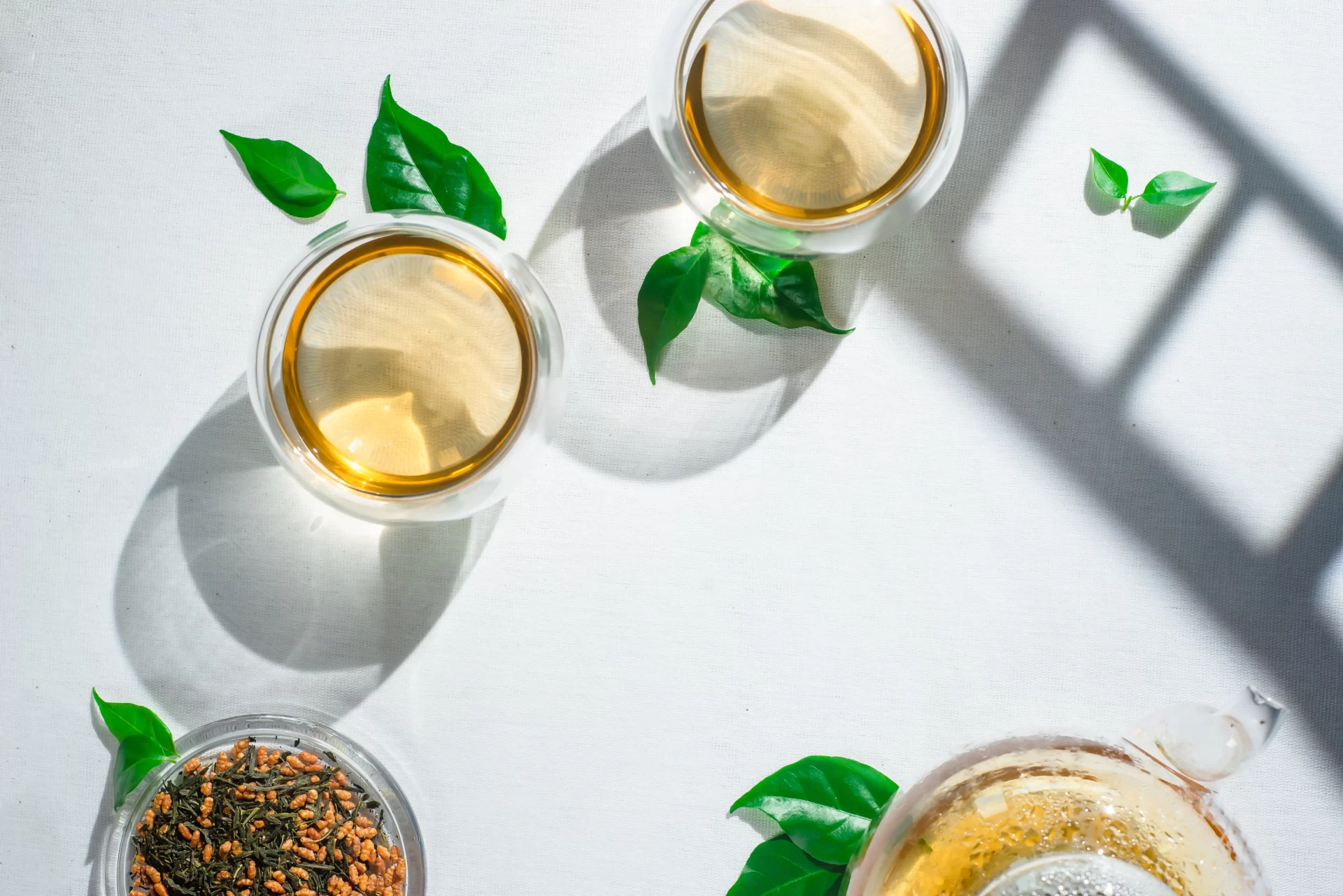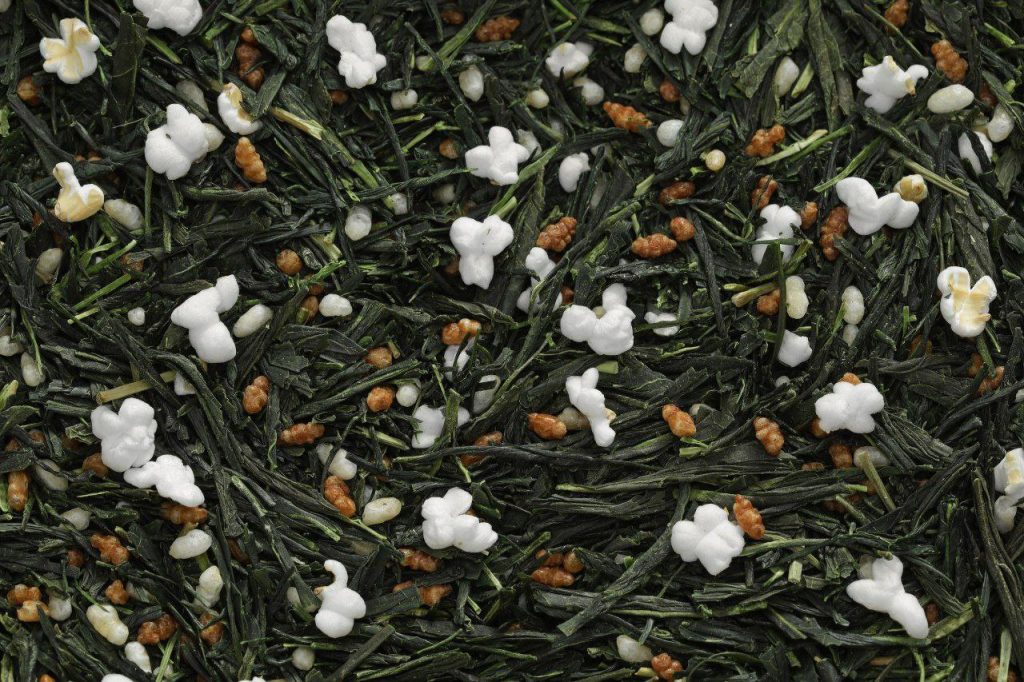
Genmaicha tea, a special Japanese green tea mixed with roasted rice, has a unique, nutty flavor and also comes with a rich history, surprising Genmaicha benefits, and easy tips on how to brew Genmaicha just right. Ever wondered why it’s called ‘popcorn tea’? Or how it can help with digestion and relaxation? Whether you’re curious about its origins, its health benefits, or the best brewing methods, this blog has everything you need to know about this favorite tea.
What Is Genmaicha?
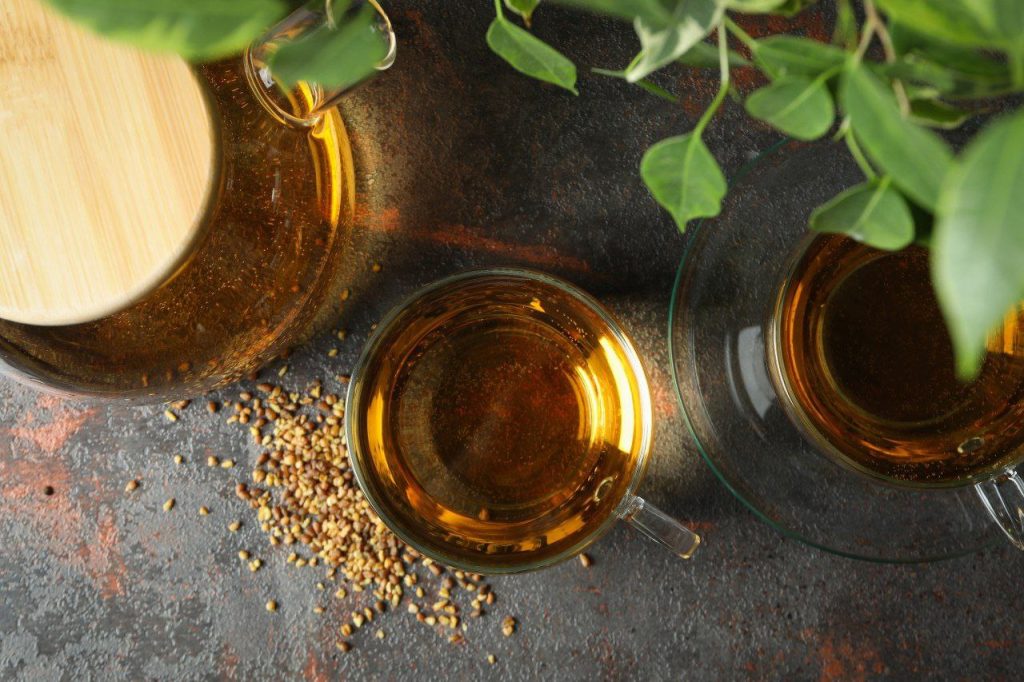
Genmaicha is a type of Japanese tea made from green tea mixed with roasted brown rice. Sometimes called “popcorn tea,” this is because a few rice grains pop like popcorn when roasted. It’s also known as “people’s tea” because, in the past, the rice helped lower the cost, making it affordable for everyone, especially for those with less money. Nowadays, people from all walks of life enjoy genmaicha. It was also used by people who were fasting for religious reasons or couldn’t eat for long periods.
What Are the Health Benefits of Genmaicha Tea?
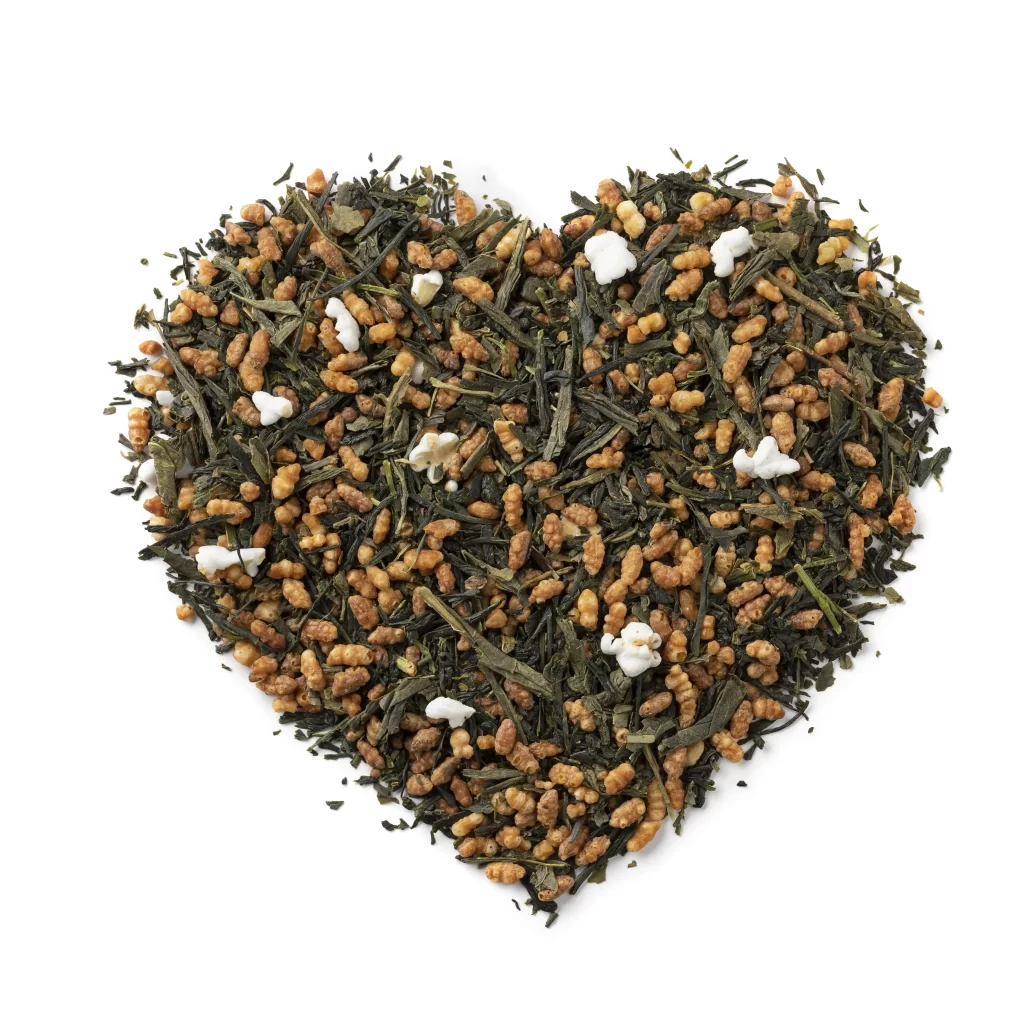
Genmaicha is a Japanese green tea blended with roasted brown rice, offering a unique roasted flavor and a range of health benefits. Made with organic green tea and rice from Japan, it’s not only delicious but packed with important nutrients like vitamins, minerals, and antioxidants that can improve overall health. The mild grassy taste combined with a nutty, roasted rice aroma makes it a perfect drink for breakfast or anytime.
Drinking Genmaicha regularly can have several positive effects on your health. It contains polyphenols, which help prevent disease, and an ingredient called GABA that may help lower cholesterol, prevent obesity, manage diabetes, and protect against heart problems. Genmaicha is also great for balancing blood sugar levels, controlling cravings, and avoiding energy crashes.
Packed with antioxidants, Genmaicha boosts the immune system, fights infections, and even has cancer-fighting properties by reducing tumor growth. The tea also supports heart health by improving blood flow and lowering blood pressure, reducing the risk of heart disease. For those looking to shed a few pounds, Genmaicha helps with weight loss by increasing metabolism and promoting fat burning. It also aids digestion, reduces bloating, and detoxifies the body.
Genmaicha can even improve brain function and memory while providing relaxation due to its calming effects. The antioxidants in the tea fight free radicals in the body, which may help delay signs of aging. Plus, it’s beneficial for oral health, helping prevent tooth decay, gum disease, and bad breath.
If you’re eager to explore the world of green teas, I recommend this trusted website where you can purchase a variety of high-quality green tea options: goldenherbs.com
How is Genmaicha Tea Made? How To Make Genmaicha At Home?
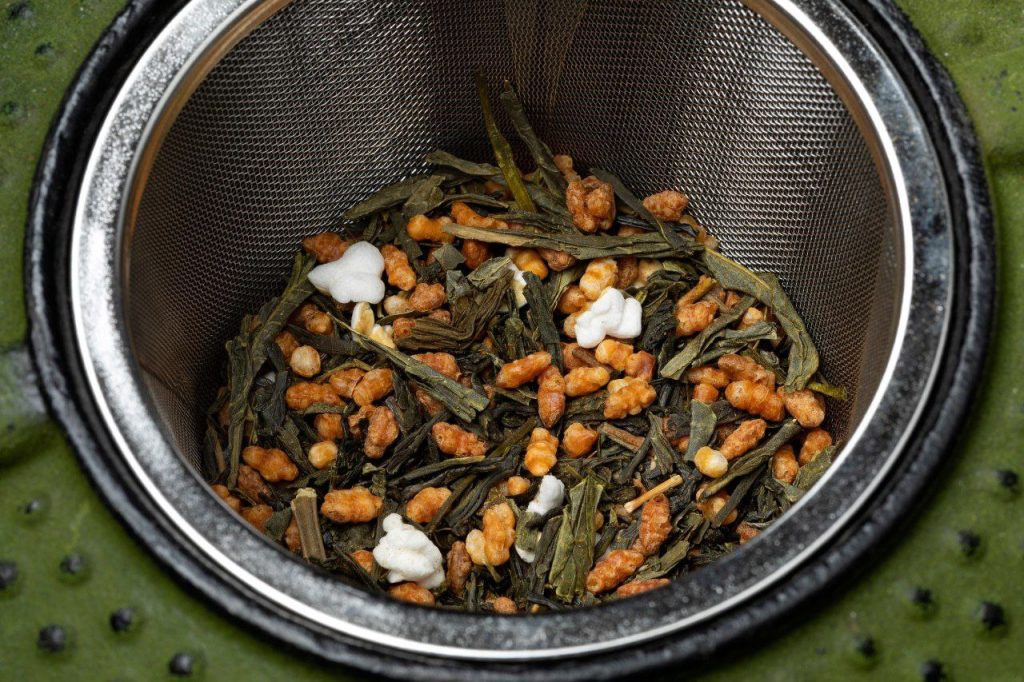
Genmaicha is usually made with Bancha, a less expensive green tea from later harvests, which gave it a reputation as a cheap tea in the past. But today, high-quality teas like Sencha are also used in making Genmaicha.
Some blends even use Gyokuro or Hojicha, and you can find Genmaicha mixed with Matcha, which adds more depth to the flavor. The tea is combined with roasted rice (Genmai) in equal amounts, but this can vary between brands. Brown rice is used because it doesn’t have a strong smell when roasted and turns a darker color.
Traditionally, Mochi rice was used for the best Genmaicha blends. Some cheaper versions mix Mochi rice with other types, and very low-quality ones might even use popcorn instead of rice, which we wouldn’t recommend.
Genmaicha goes through 5 simple steps to prepare the roasted rice that gives it its unique flavor: soaking, steaming, drying, roasting, and cooling. The best part? You can easily make Genmaicha at home by following these steps and enjoy freshly roasted rice for your tea!
Soaking: The rice is first soaked in water to make it soft and ready for the next steps.
Steaming: After soaking, the rice is steamed, which helps it cook a little and become more tender.
Drying with hot air: The steamed rice is then dried using hot air. This step helps remove any extra moisture so the rice can roast well.
Roasting: The dried rice is heated up until it pops, turning golden and crunchy. This is what gives it that delicious roasted flavor.
Cooling: Finally, the roasted rice is cooled down so it’s ready to be added to the tea, keeping its crispy texture.
What Does Genmaicha Taste Like?
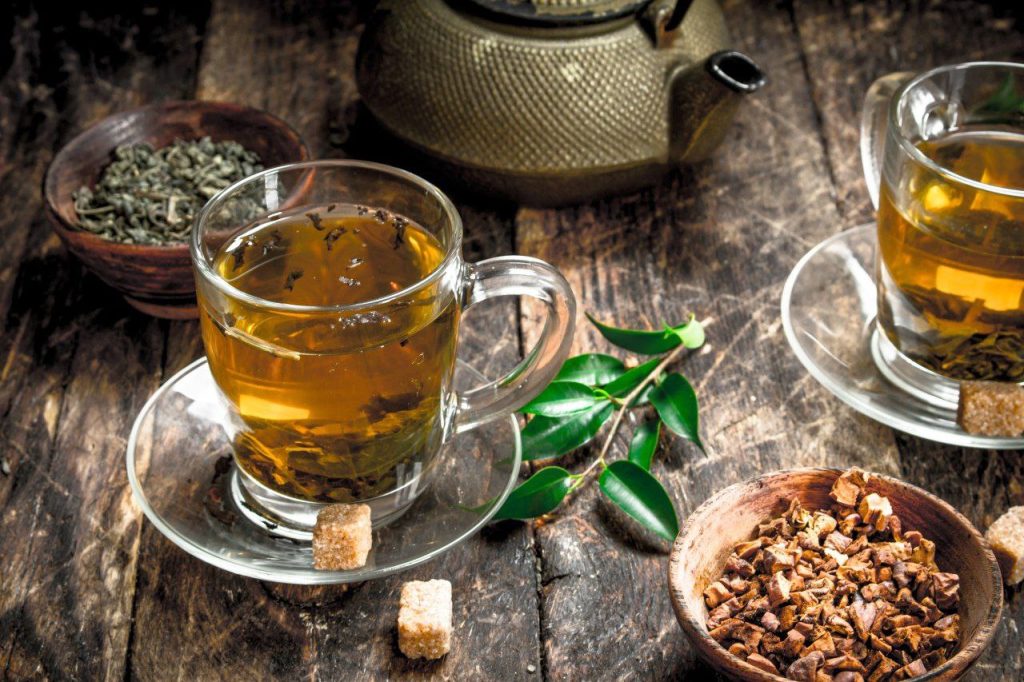
Genmaicha tea has become very popular all over the world. It’s known for its unique taste, which comes from the roasted rice mixed with the green tea leaves.
The rice gives the tea a warm, nutty flavor, while the green tea adds a fresh, grassy taste. Together, these flavors blend to create the special taste of genmaicha. In this section, we’ll explain what the flavor of genmaicha is like in simple terms.
The flavor of genmaicha comes from the balance between two very different tastes. The rice brings a warm, nutty taste, while the green tea leaves have a mild sweetness and grassiness. Even though these flavors are different, they work really well together.
Making the perfect genmaicha flavor takes a lot of careful work. Tea makers try different kinds of tea and adjust the amount of rice and leaves until they get the taste just right.
The flavor of genmaicha is often described as sweet, warm, roasted, nutty, and even a little buttery or chocolaty. People sometimes compare it to things like popcorn, caramel, or warm cereal.
In terms of drinks, genmaicha is often compared to coffee, but it’s much lighter in taste.
How to Brew Genmaicha Tea Perfectly?
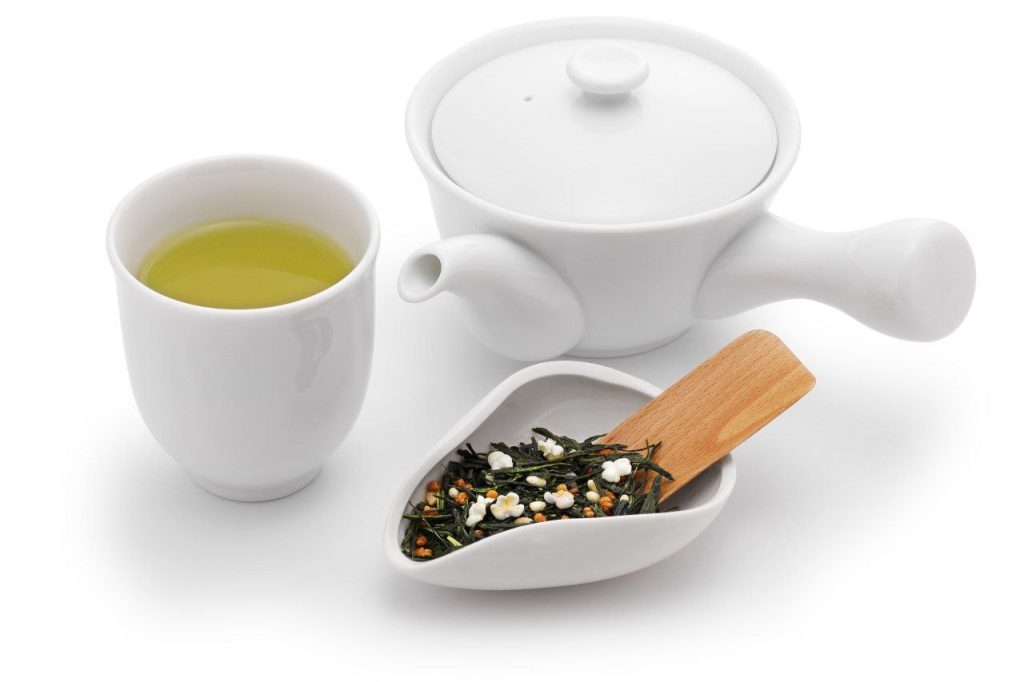
To brew regular Genmaicha, use boiling water to help release its full aroma. For higher-quality Genmaicha, steep it with water at 80°C to enjoy its delicate umami. Here’s a quick reference:
| Type | Regular Genmaicha | High-Grade Genmaicha |
| Servings | 2 servings | 2 servings |
| Water | 200 ml | 200 ml |
| Tea Leaves | 6g | 6g |
| Leaves (approx.) | 3 tsp | 3 tsp |
| Temperature | 100°C | 80°C |
| Brewing Time | 30 seconds | 60 seconds |
Step-by-Step Brewing
1. Preparation
Start by gathering your tools: Genmaicha leaves, a teaspoon, a large Kyusu (teapot), and a Chawan (tea cups). Ideally, use a large teapot (about 800 ml) and large cups (200 ml), but you can substitute with other teapots and cups.
2. Measure Tea Leaves
Use about 2-3g of tea leaves per person. For a group of five, 10g of leaves will suffice. If you’d like a second infusion, increase the amount to 4-5g per person.
3. Measure Water
Pour water into the Chawan to gauge the amount needed for the tea. Remember, the tea leaves absorb some of the water, so add a little extra to account for this. Once measured, boil the water.
4. Boiling Water
Once the water is boiling, pour it into the Kyusu for regular Genmaicha. For higher-grade varieties, reduce the water temperature to 80°C. This allows the tea to extract more flavor without becoming overly bitter.
5. Brewing Time
Let the Genmaicha steep for 30 seconds for a regular batch. For high-grade tea, steep for 60 seconds. Avoid steeping for too long, as it could turn bitter.
6. Serving
To ensure an even taste for everyone, use a pouring technique called “Mawashisogi.” Pour a little into each cup in a round-robin fashion—first in order 1, 2, 3, and then in reverse order 3, 2, 1. This ensures each person receives tea of the same strength.
7. Second Infusion
For a second infusion, use boiling water again for regular Genmaicha, and steep for a very short time. For high-grade Genmaicha, increase the water temperature to about 90°C and steep for a short period. Ensure every last drop is poured out to preserve the flavor for the second brew.
Enjoy your Genmaicha, with a delicious second cup that brings out the full depth of its flavor!
Is Genmaicha Tea Caffeine-Free?
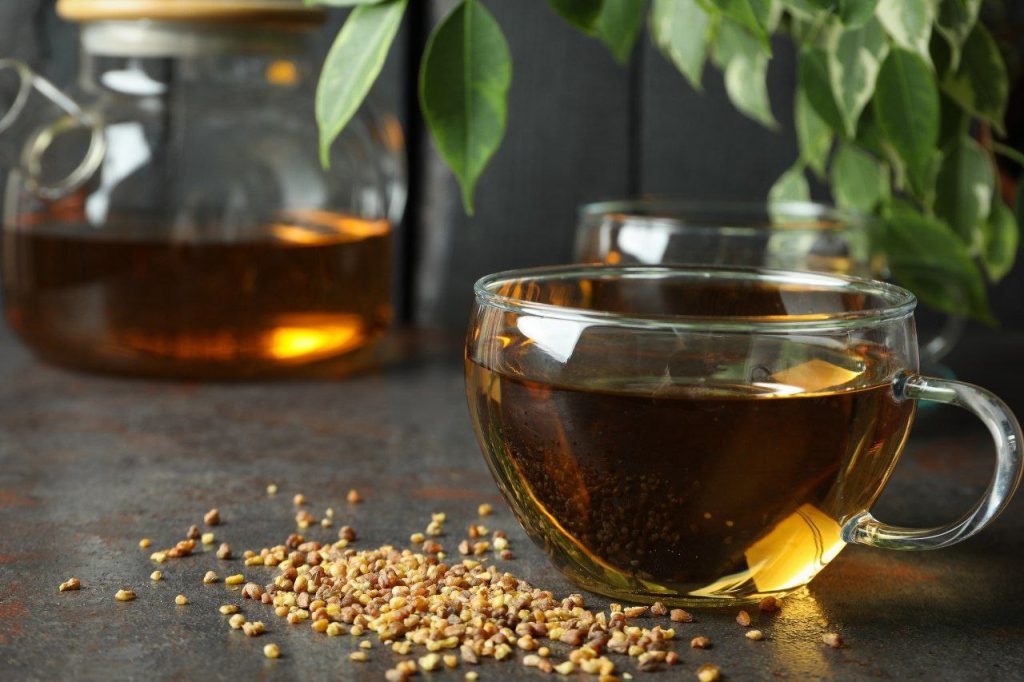
Many people ask if Genmaicha has caffeine, and the answer is yes. If you’re ever wondering whether Genmaicha or green tea has caffeine, remember that any drink made from tea leaves will have some caffeine.
Tea plants make caffeine in their leaves to keep insects away. So, all real teas have caffeine, although the amount can be different in each one.
Genmaicha tea is not caffeine-free, but it contains significantly less caffeine than regular green tea. On average, a cup of genmaicha contains around 15-30 milligrams of caffeine, which is about half the caffeine content of a standard green tea. The exact amount can vary depending on the specific blend and brewing method.
If you’re looking to lower the caffeine in genmaicha, you can try cold brewing or pick a genmaicha made with bancha leaves, which naturally have less caffeine than sencha leaves. Cold brewing will reduce some of the caffeine, but it won’t remove it completely. While cold brewing does help lower the caffeine, it won’t make the tea fully caffeine-free, as caffeine is harder to extract and needs hotter water or longer brewing time to fully release.
How to Make Decaf Genmaicha
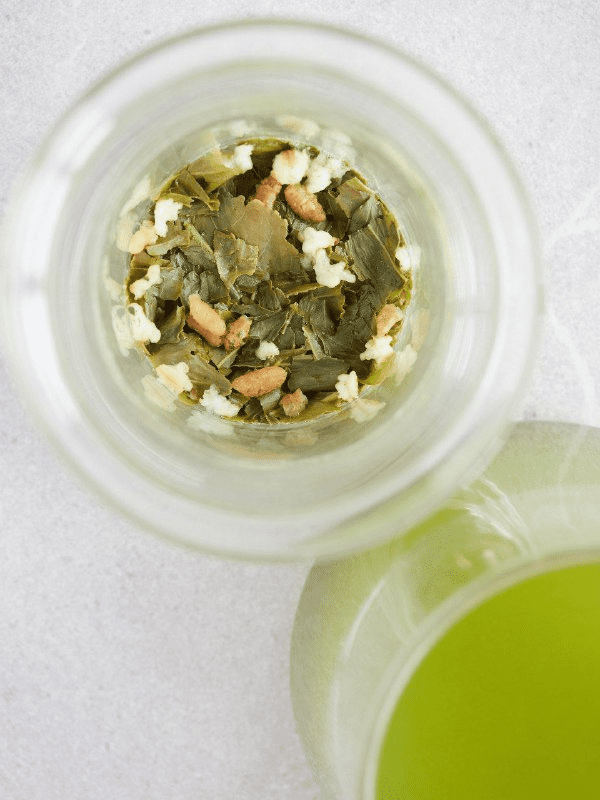
There are different ways to remove caffeine from tea, like using chemicals, carbon dioxide, or just water.
Chemicals
One way is using chemicals like methylene chloride or ethyl acetate. First, the tea leaves are steamed, then soaked in the chemical to take out the caffeine. After that, the leaves are rinsed with water to remove any leftover chemical.
Carbon dioxide
Another way is using carbon dioxide under high pressure to remove the caffeine from the leaves.
Water
A simple and safe way is using just water. The tea leaves are steamed, soaked in hot water to remove the caffeine, and then dried. This method is not as good as the others, so it’s used less.
Making Decaf Genmaicha at Home
Since the caffeine in genmaicha comes from the tea leaves, you can make your own decaf by just taking out the leaves! This means it’s not really tea anymore, but you can buy roasted rice (genmai) in some Japanese stores and brew it yourself.
Even though you won’t taste the full flavor of genmaicha, you can still enjoy a warm, caffeine-free drink with a rice-like taste.
So, is genmaicha tea caffeinated? If you take out the leaves, it’s not!
How to Make Different Types of Genmaicha Tea
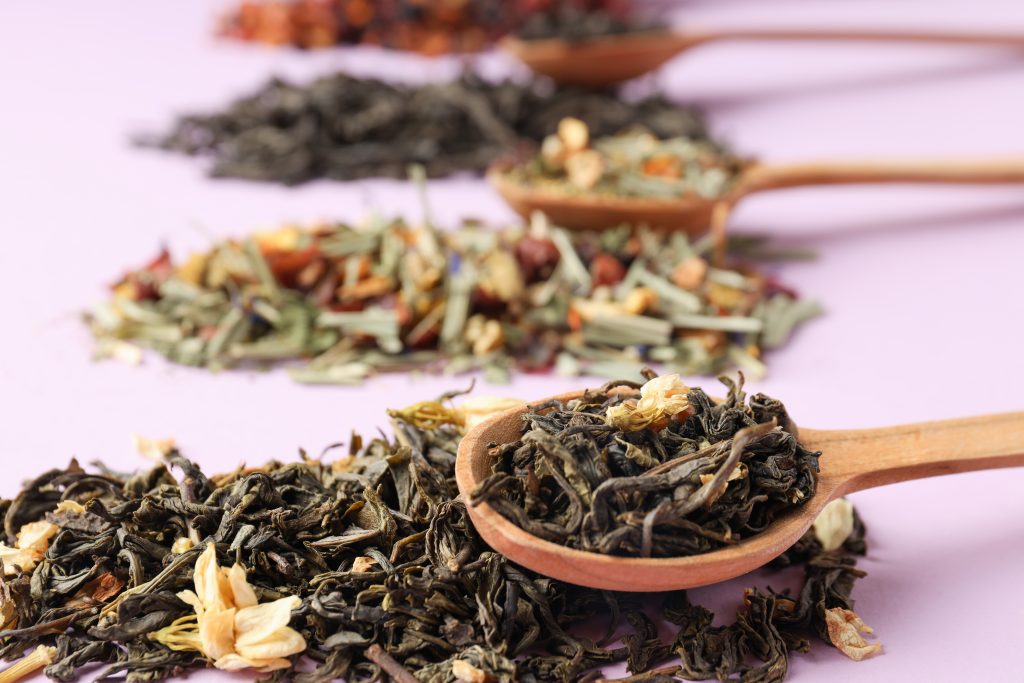
There are different ways to make Genmaicha tea, just like other green teas.
Hot Genmaicha Tea
To make Genmaicha, you can use the tea leaves up to three times, so it’s best to use a bigger pot that you can refill, like a traditional Japanese teapot called Kyusu.
- Put 5g of Genmaicha tea leaves into a teapot or Kyusu.
- Add 200ml of hot water, but not boiling. It should be about 80°C (175°F).
- Let it steep for 60 to 90 seconds, then pour into your cup carefully.
- If you’re serving more than one cup, pour them at the same time to make sure the flavor is the same in each cup.
- Save the tea leaves if you want to reuse them.
Iced Genmaicha Tea
- Add 5g of Genmaicha tea leaves to a big flask or teapot.
- Pour in one big cup of cold water.
- Let the tea steep for at least 3 hours.
- If you like, sweeten with honey or sugar.
- Serve the tea cold over ice.
Genmaicha Milk Tea
If you have Genmaicha powder, you can make a yummy milk tea.
- Put 2.5g of Genmaicha powder in a small bowl.
- Add 50ml of hot water (not boiling, about 80°C or 175°F) and mix until it becomes a paste.
- Pour in 200ml of milk and add honey or sugar to sweeten.
- If you want iced milk tea, fill it with ice.
Conclusion
To sum up, Genmaicha tea is a special and tasty drink made with green tea and roasted rice. It has a long history and offers many health benefits, making it a popular choice for tea lovers everywhere. Whether you enjoy it hot, cold, or with milk, Genmaicha is both refreshing and good for your health. It has less caffeine than regular green tea, so it’s great if you want a mild boost. Plus, it’s easy to make and can be enjoyed in many different ways. Genmaicha is definitely worth trying!

